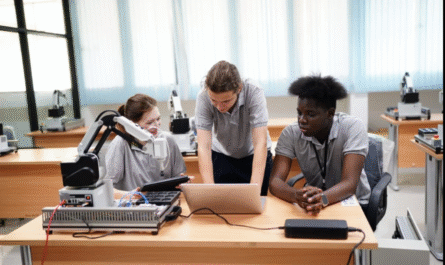In today’s hyperconnected world, video content dominates the digital landscape—from social media reels and educational tutorials to global product launches and entertainment. But one major barrier still persists: language. AI-powered video translation tools are rapidly dismantling this barrier, making video content accessible to audiences worldwide—seamlessly and affordably.
Why Video Translation Matters
Video is no longer confined to local audiences. Brands, educators, and creators all want to reach global viewers. Traditionally, this meant costly and time-consuming processes involving human translators, voice actors, and complex video editing. AI is changing that, offering scalable, fast, and increasingly accurate solutions.
How AI Translates Videos
AI-driven video translation tools leverage a combination of:
- Automatic Speech Recognition (ASR): Converts spoken words into text.
- Machine Translation (MT): Translates the transcribed text into the target language.
- Text-to-Speech (TTS) or Voice Cloning: Generates new audio tracks, often in the original speaker’s voice or style.
- Lip-syncing (optional): Aligns the speaker’s lip movements with the new language for a more natural appearance.
Some advanced platforms even use emotion detection to ensure the translated voice carries the right tone.
Leading AI Video Translation Tools in 2025
Here are some top AI-powered tools transforming the video translation landscape:
1. Sora by OpenAI (beta phase)
Sora, OpenAI’s video generation model, includes the ability to translate and lip-sync videos. While it’s not publicly available in full yet, its integration with GPT models shows strong promise for future AI-driven localization.
2. HeyGen
HeyGen offers automatic translation and voice dubbing with near-realistic voice cloning. It also includes lip-sync capabilities and avatar-based video creation, making it great for business or educational content.
3. Deepdub
Deepdub focuses on high-quality dubbing using AI voice models tailored to preserve the original speaker’s tone and emotion. It’s aimed at the entertainment industry for films and shows.
4. Papercup
Papercup provides AI voiceovers with human-sounding TTS, used by major broadcasters like Sky News. It emphasizes fast turnaround with broadcast-quality results.
5. Veed.io & Descript
These user-friendly platforms integrate AI subtitling and voice translation features within broader video editing toolkits. Ideal for creators who want to quickly localize content for platforms like YouTube, TikTok, or LinkedIn.
Benefits of AI-Powered Translation
- Speed & Scalability: Translate hundreds of hours of video in minutes.
- Cost-Efficiency: Eliminates the need for expensive dubbing studios and large translation teams.
- Multilingual Reach: Unlock access to global audiences with subtitles, dubbing, or both.
- Voice Preservation: Many tools now maintain speaker identity, ensuring authenticity.
Challenges to Consider
While AI tools are powerful, they aren’t perfect:
- Accuracy: Cultural nuances or idioms can still trip up machine translation.
- Emotion & Tone: AI voices can sometimes lack the full emotional depth of human actors.
- Data Privacy: Uploading videos to cloud-based tools may pose security concerns for sensitive content.
The Future of AI Video Translation
With advancements in generative AI, we’re moving toward fully automated, emotionally intelligent, and culturally aware translations. Soon, creators may produce a single video and have it instantly localized into dozens of languages—with matching voices, expressions, and even body language.
Final Thoughts
AI-driven video translation is not just a tech trend—it’s a revolution in communication. Whether you’re a solo creator or a global brand, these tools empower you to connect with the world, one translated video at a time.



